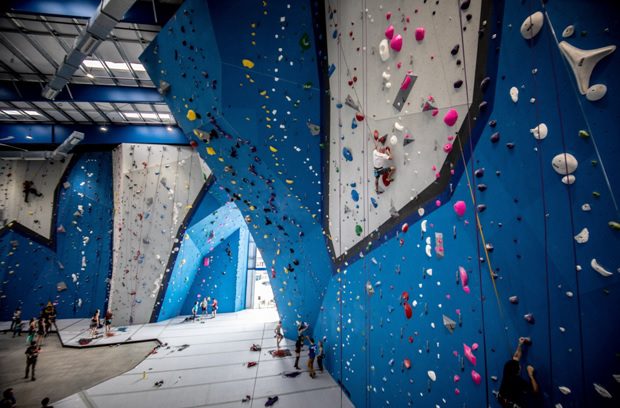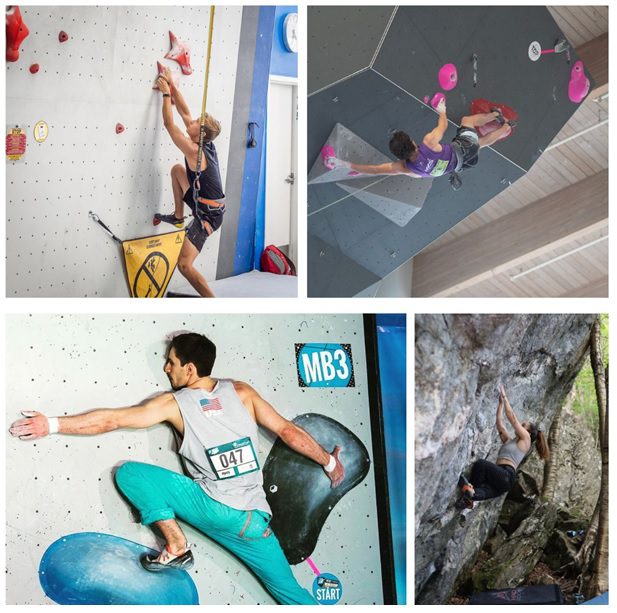
Beyond the Treadmill: Indoor Climbing Gyms vs. Cardio Workouts
Are you tired of the same old routine on the treadmill? Feel like you’re running in place, both literally and metaphorically? If you’re looking for an exhilarating alternative to traditional cardio workouts, indoor climbing gyms might just be the adventure you’ve been seeking.
Picture this: scaling walls, testing your strength, and challenging both your mind and body in a dynamic and engaging environment.
In this article, we’ll take a closer look into the heart-pounding world of indoor climbing gyms and explore how they stack up against standard cardio workouts.

Indoor Climbing Gyms: A Total-Body Challenge
When it comes to engaging your entire body, indoor climbing takes the spotlight. Unlike treadmills, which predominantly target your legs and cardiovascular system, indoor climbing is a comprehensive workout that involves multiple muscle groups and contributes to overall strength and endurance. Let’s dive deeper into the holistic benefits of indoor climbing:
Engaging Your Upper Body:
As your grip holds and pulls yourself up the wall, your arms and upper body muscles, including your biceps, triceps, shoulders, and back, come into play. This engagement is particularly evident during overhangs and difficult routes that demand strong pulling movements. Over time, consistent indoor climbing leads to increased upper body strength and definition.
Empowering Your Core:
Maintaining balance and stability while navigating the wall requires strong core muscles. Whether you’re making lateral moves or reaching for holds, your core muscles—abdominals, obliques, and lower back—are constantly engaged to keep you steady and centered. This core activation contributes to better posture, stability, and even helps prevent back pain.
Involving Your Legs:
While it’s true that climbing mainly focuses on your upper body, your legs play an essential role as well. Your legs provide stability, support, and generate power as you push off from the wall to make upward progress. They also work in tandem with your core to create a coordinated movement pattern.
Enhancing Grip Strength:
Climbing naturally strengthens your grip—this might sound like a minor benefit, but it has significant implications for daily life. Whether you’re carrying heavy grocery bags, opening jars, or participating in other sports, a stronger grip translates into better overall functional strength.
Efficiency and Effectiveness:
By simultaneously targeting multiple muscle groups, indoor climbing provides a highly efficient and effective cardio session. In a single climb, you’re engaging your upper body, core, and legs, making it a time-saving way to work out. This holistic approach also elevates your heart rate, improving cardiovascular fitness while building muscle.
Indoor climbing isn’t just a physical challenge; it’s a total-body experience that strengthens muscles, enhances stability, and boosts cardiovascular fitness. This holistic approach is one of the reasons why indoor climbing provides a refreshing alternative to traditional cardio workouts.

Cardio Workouts: Pros and Cons
While indoor climbing gyms offer a unique cardio experience, it’s essential to consider the pros and cons of traditional cardio workouts as well.
Pro: Easy Accessibility
One of the undeniable advantages of traditional cardio workouts, such as using treadmills or stationary bikes, is their widespread availability.
Most gyms, fitness centers, and even home setups offer easy access to these cardio machines. This accessibility ensures that you can easily incorporate a cardio session into your daily routine, making it a convenient option for those with busy schedules.
Con: Repetition
One potential drawback of traditional cardio workouts is the risk of monotony. Repeating the same movements, whether it’s running on a treadmill or cycling on a stationary bike, can lead to decreased motivation and interest over time.
The repetitive nature of these workouts may result in a loss of excitement, making it challenging to stay engaged in the long run.
Pro: Controlled Environment
Treadmills and stationary bikes offer the advantage of a controlled workout environment. You have the power to adjust the speed, incline, and resistance levels based on your fitness level and goals. This level of control allows you to customize your cardio session to match your preferences and progressively challenge yourself.
Con: Limited Engagement
While traditional cardio workouts provide physical benefits, they might not engage your mind to the same extent as indoor climbing does. The predictable nature of treadmill running or stationary cycling might lead to a lack of mental stimulation, potentially resulting in boredom during longer sessions.
The Long-Term Benefits of a Holistic Workout
While traditional cardio workouts offer their advantages, a well-rounded approach that incorporates strength, flexibility, and mental engagement becomes crucial, especially as we age. Let’s explore why a holistic workout is essential for long-term health and well-being.
Maintaining Muscle Mass and Bone Density
A key component of a holistic workout is strength training. As we age, our muscle mass naturally decreases, leading to a decline in metabolism and potential mobility issues.
Strength training helps counteract this loss by preserving muscle mass, improving bone density, and promoting overall functional strength. By engaging in activities that challenge our muscles, such as indoor climbing, we can maintain vitality, balance, and the ability to perform daily tasks independently.
Enhancing Flexibility and Joint Health
A well-rounded workout doesn’t just focus on cardio or strength; it also includes flexibility exercises. As we grow older, maintaining flexibility becomes crucial for preventing injuries, maintaining proper posture, and ensuring that our joints remain healthy and functional.
Activities like yoga and dynamic stretching, often integrated into holistic workouts, promote flexibility, alleviate stiffness, and enhance range of motion.
Cognitive Benefits and Mental Well-Being
A holistic workout isn’t just about physical health; it also nurtures mental well-being. Engaging in activities that challenge your mind, such as problem-solving during indoor climbing, can have profound cognitive benefits.
Additionally, the release of endorphins during a well-rounded workout contributes to reduced stress, improved mood, and increased overall happiness.
Reach New Heights with Indoor Climbing Gyms
Indoor climbing gyms offer a cardio experience that transcends the treadmill. It’s a total-body challenge that keeps you engaged, provides a supportive community, and brings a refreshing twist to your fitness routine.
While traditional cardio workouts have their benefits, the excitement and full-body engagement of indoor climbing make it an incredible alternative.
So, if you’re ready to elevate your cardio workouts and experience the thrill of scaling walls, why not give indoor climbing at Reach Climbing & Fitness a try?
It’s a cardio adventure like no other, and you might just discover a new passion that takes your fitness journey to new heights.


No Comments